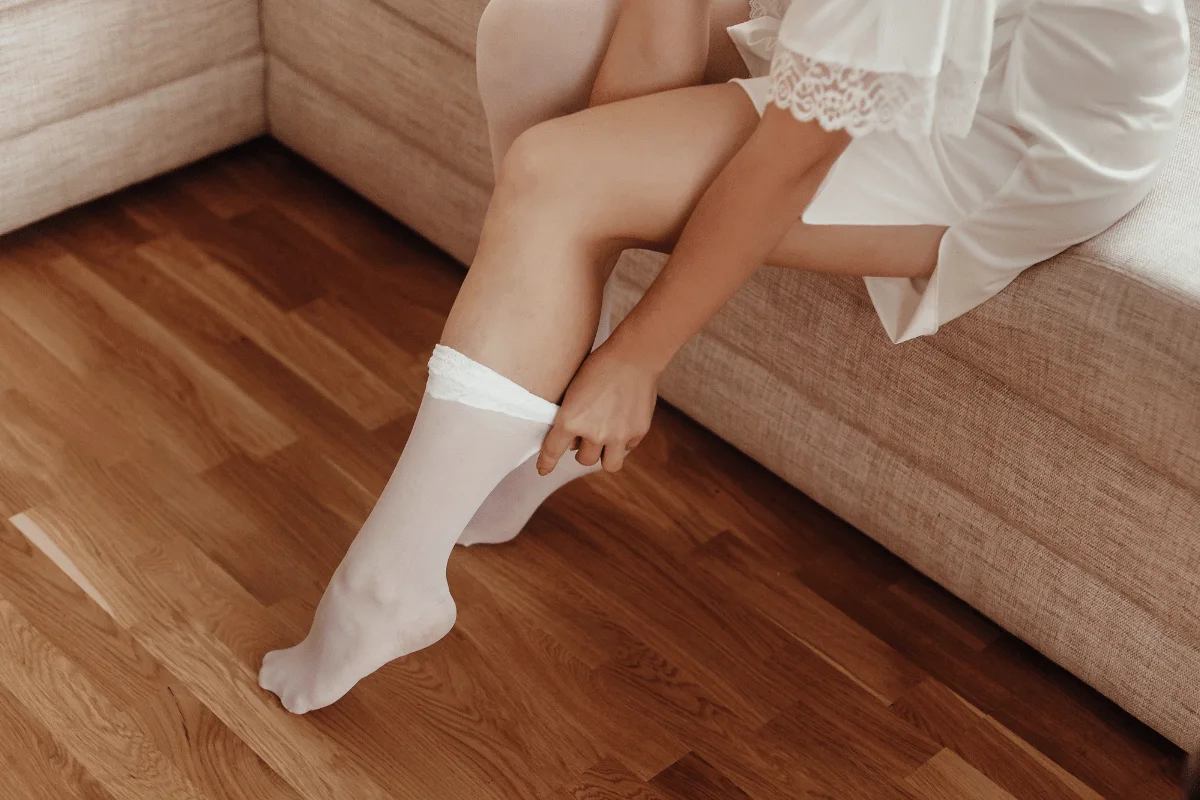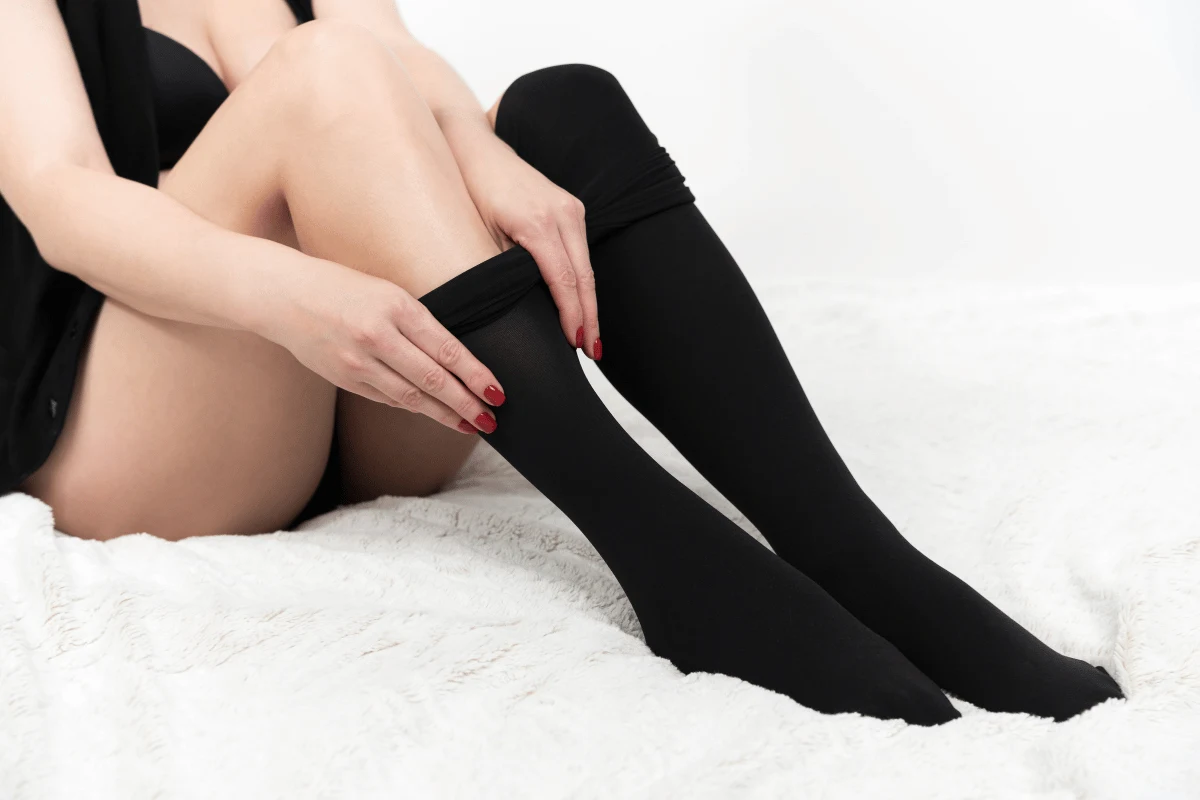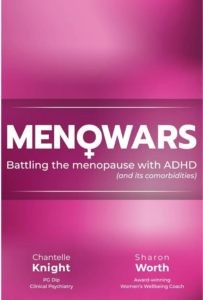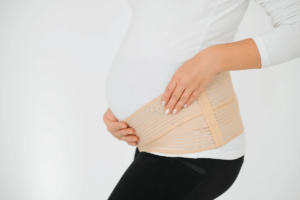Pregnancy is a beautiful and transformative journey, but it brings significant changes to a woman’s body. Among the most common physical challenges during pregnancy are swelling of the feet and ankles, leg fatigue, poor circulation, varicose veins, and the risk of deep vein thrombosis (DVT). These issues, if not addressed, can lead to discomfort and even complications. One simple and effective solution to these problems is wearing compression socks.

Understanding Compression Socks
Compression socks, sometimes called support stockings, exert pressure on the lower legs and feet, helping blood return to the heart efficiently. Unlike ordinary socks, compression socks provide graduated compression, tightest at the ankle and gradually lessening toward the knee or thigh.
This design supports the veins, reduces swelling, prevents blood pooling, and alleviates discomfort. Compression socks are widely recommended for people with circulatory problems, but pregnant women particularly benefit due to increased blood volume and pressure on the veins from the growing uterus.
How Compression Socks Work
Compression socks function through gradual, targeted pressure distribution, providing a range of physiological benefits essential for pregnant women.
- Improves Circulation – They gently squeeze veins and calf muscles, enhancing blood flow back to the heart. This prevents blood from pooling in the lower legs, reducing heaviness and fatigue.
- Reduces Venous Pressure – Consistent compression supports vein walls and valves, helping prevent overexpansion, discomfort, and the formation of varicose veins.
- Minimizes Swelling (Edema) – Fluid accumulation in the feet, ankles, and lower legs is reduced, relieving puffiness and pressure, which is especially helpful during long periods of standing or sitting.
- Prevents Blood Clots – By promoting steady blood flow, compression socks reduce the risk of deep vein thrombosis (DVT), which can be a serious concern during pregnancy.
- Supports Leg Muscles – The gentle compression helps stabilize leg muscles, reducing fatigue, cramping, and soreness.
- Enhances Lymphatic Drainage – Compression encourages lymph fluid movement, which further reduces swelling and promotes detoxification in the legs.
- Improves Comfort During Daily Activities – Whether walking, exercising, or standing for long periods, compression socks provide continuous support, improving overall mobility and comfort.
By addressing circulation, venous pressure, fluid retention, and muscle fatigue, compression socks promote overall leg health, comfort, and safety throughout pregnancy.
Health Benefits of Compression Socks During Pregnancy
1. Reduces Swelling (Edema)
Swelling, or edema, in the feet, ankles, and legs affects up to 80% of pregnant women, especially during the third trimester. Factors contributing to swelling include:
- Increased blood volume – Pregnancy increases blood volume by up to 50%, placing extra pressure on veins.
- Hormonal changes – Progesterone relaxes blood vessel walls, making them more prone to fluid retention.
- Pressure from the uterus – The growing uterus compresses pelvic veins, slowing blood return from the legs.
Compression socks apply gentle pressure that encourages fluid to flow upward, reducing swelling and discomfort. Women often report less heaviness, puffiness, and pain when wearing compression socks throughout the day.
2. Improves Circulation
Poor circulation is a common concern during pregnancy. As blood volume increases, veins in the legs may struggle to push blood efficiently back to the heart. Symptoms of poor circulation include:
- Heaviness in the legs
- Cramping
- Fatigue or tired legs
Compression socks enhance venous return, ensuring better oxygen and nutrient delivery to tissues. Improved circulation reduces leg fatigue, helps prevent varicose veins, and minimizes the risk of clot formation.
3. Prevents Varicose Veins
Varicose veins are swollen, twisted veins often visible under the skin. Pregnancy increases the likelihood of developing varicose veins due to:
- Hormonal changes that relax vein walls
- Increased blood volume
- Pressure from the uterus on pelvic veins
Compression socks support vein walls and valves, reducing pooling and preventing vein enlargement. Wearing them early in pregnancy may help minimize permanent vein damage and provide relief from pain and heaviness.
4. Reduces Risk of Deep Vein Thrombosis (DVT)
Pregnant women are at an increased risk of DVT, a condition in which blood clots form in deep veins, often in the legs. DVT is dangerous because clots can travel to the lungs, causing pulmonary embolism.
Compression socks improve blood circulation, helping prevent blood stagnation that can lead to clot formation. They are particularly important for women:
- On bed rest
- With limited mobility
- With a history of clotting disorders
By supporting circulation, compression socks play a critical role in reducing DVT risk during pregnancy.
5. Relieves Leg Fatigue and Pain
Leg fatigue, heaviness, and cramping are common, especially after long periods of standing or walking. Compression socks help:
- Support calf muscles
- Reduce strain on veins
- Promote blood return and oxygen delivery
Women report less tiredness, lighter legs, and reduced cramping when wearing compression socks consistently. This makes everyday tasks, travel, and standing for long periods more manageable.
6. Enhances Overall Leg and Foot Health
Additional benefits include:
- Reducing appearance of spider veins
- Thermal regulation – keeping legs warm in cooler climates
- Improved comfort – especially during travel, exercise, or daily activities
Compression socks offer a non-invasive, low-risk way to maintain leg health and prevent complications during pregnancy.
Selecting the Right Compression Socks
Proper selection is essential for comfort, effectiveness, and safety during pregnancy. Consider the following factors when choosing the ideal compression socks:
Compression Level
- Mild (15–20 mmHg): Ideal for most pregnant women; helps reduce swelling, leg fatigue, and minor discomfort.
- Moderate (20–30 mmHg): Recommended for women with significant varicose veins, history of DVT, or other circulatory concerns, but only under doctor supervision.
- Higher Compression (30–40 mmHg): Rarely needed during pregnancy; only prescribed for medical conditions by healthcare professionals.
Fit and Sizing
- Snug but not tight: Socks should feel supportive but not restrict blood flow or cause numbness.
- Accurate measurement: Measure calf circumference, ankle, and foot size to ensure correct compression levels and comfort.
- Consider pregnancy changes: Legs and feet may swell during the day, so check fit regularly.
Material and Comfort
- Breathable fabrics: Cotton, nylon, spandex, or moisture-wicking blends keep legs cool and prevent irritation.
- Durable stitching: Quality seams reduce rolling or bunching during wear.
- Soft edges and reinforced toes: Prevent discomfort, especially with extended wear.
Style and Design
- Knee-high, thigh-high, or full-leg stockings: Choose depending on which areas need support.
- Open-toe or closed-toe designs: Open-toe socks can be cooler and allow toe movement; closed-toe provides full coverage.
- Fashionable options: Modern compression socks come in a variety of colors and patterns, allowing style without compromising functionality.
Table: Recommended Compression Sock Brands for Pregnancy
| Brand | Compression Level | Material | Style | Price Range |
| Charmking | 15–20 mmHg | Nylon/Spandex | Knee-high | $$ |
| Sockwell | 15–20 mmHg | Merino Wool | Knee-high | $$$ |
| LegSmart | 20–30 mmHg | Cotton Blend | Knee-high | $$ |
| BeVisible Sports | 15–20 mmHg | Nylon/Spandex | Knee-high | $$ |
| VIM & VIGR | 15–20 mmHg | Nylon/Spandex | Knee-high | $$$ |
Practical Tips for Wearing Compression Socks
- Wear in the morning: Put on socks when swelling is minimal.
- Remove at night: Allow legs to rest and blood flow to normalize.
- Gradually increase wear time: Begin with a few hours daily and extend as comfortable.
- Consult your doctor: Essential for women with pre-existing conditions or pregnancy complications.
- Check fit regularly: Legs may change size during pregnancy, so remeasure for proper compression.
Additional Considerations
Travel and Long Flights
Pregnant women traveling long distances are at higher risk of swelling and DVT. Wearing compression socks during flights or car rides can:
- Minimize swelling
- Reduce leg fatigue
- Enhance comfort
Exercise Support
Women who walk or engage in low-impact pregnancy exercises can wear compression socks for:
- Muscle support
- Improved circulation
- Faster recovery from fatigue
Daily Life Benefits
Even routine tasks like standing at work or shopping can strain legs. Compression socks help manage day-to-day discomfort, making pregnancy more comfortable and active.
FAQs
Are compression socks safe to wear during pregnancy?
Yes, compression socks are generally safe during pregnancy and can help alleviate common discomforts like swelling and leg fatigue.
How do compression socks reduce swelling during pregnancy?
They apply gentle pressure to the legs, which helps prevent fluid from accumulating and promotes better blood circulation.
What compression level is recommended for pregnant women?
A mild compression level of 15–20 mmHg is typically recommended for pregnant women to ensure comfort and effectiveness.
Can compression socks prevent varicose veins during pregnancy?
Yes, wearing compression socks can support the veins and reduce the risk of developing varicose veins during pregnancy.
How long should I wear compression socks each day?
It’s advisable to wear them during the day, especially when standing or sitting for extended periods, and remove them at night.

Conclusion
Compression socks are a simple, effective, and non-invasive solution for managing pregnancy-related leg issues such as swelling, fatigue, varicose veins, and poor circulation. They improve comfort, prevent complications, and promote overall leg health.
Choosing the right compression level, fit, material, and style ensures maximum benefits, while regular consultation with a healthcare provider ensures safe usage.



